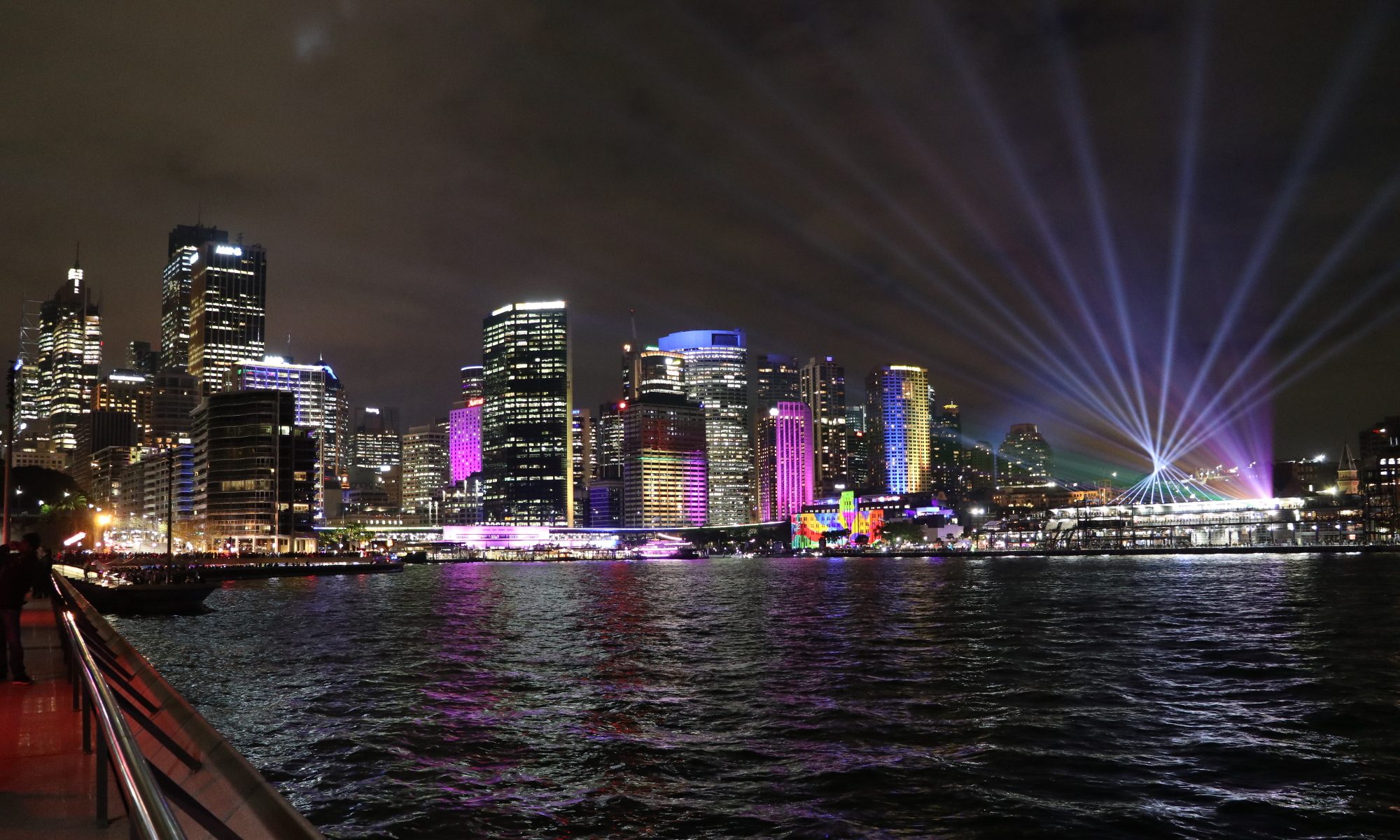Short version: I travelled from Oxford to Sydney and back within a week. That is incredible, but sadly places huge costs on the environment.
Long version:
Planetary Commute
Antipodes
This week I needed to be in Sydney for one day. To make the round trip in a week, about half the time is spent varyingly on flights and in airports. This left plenty of time to marvel at how trivial it now is to travel around the entire planet. Sydney is close to being on the opposite side of the planet (the antipode) to Oxford, so the total journey of 16,983 km is not far off the maximum distance two points can be from each other on the surface of the earth (approximately 20,000 km). Interestingly that antipodal distance is slightly less than half the 40,075 km equatorial circumference, due to the deformations in the shape of the earth. I was unable to easily find an exact calculation of the furthest two points on earth, due to errors in the data set, and the ever changing shape of the planet.
Kangaroo Route
When the British set out to colonise Australia, the trip took took 252 days. That trip can now be done commercially in less than 25 hours. (I had a longer layover that brought it closer to 30 hours). The magazine Air & Space recounts the history of this London to Sydney “Kangaroo route”.
Jet lag
Drastic changes in timezone leave an effect on the body. The NHS points out “There’s no treatment for jet lag“, but it does give helpful advice, such as attempting to move your sleep/wake cycle in sync earlier. While searching for papers on jet lag I found one on social jet lag and student performance that mines university logins. I found the charts classifying students based on chronotype interesting.
Fuel Efficiency and Carbon Impact
Passengers in a 747-400 have a fuel efficiency of about 3.1 L/100 km vs 10 L/100 km for cars. So a car with three people and a typical flight have the same carbon impact over the same distance. Thus my out and back journey consumed about 1000 L of fuel, producing 2500 kg of carbon dioxide. This is similar to the carbon emissions for a year of either eating a 75g hamburger per day, or heating a UK home.
Airborne Population (Fermi Problem)
With increasing demand and decreasing costs of air transport, at any point in time there is a proportion of the population on flights. Three ways of estimating this population:
Extrapolate from a single data point
If I assume everyone flies as frequently as I do (2 days per year, and multiply by the approximately 7 billion population on earth, that gives 14 billion flying days. Dividing this by the days in a year gives about 400,000,000 airborne people at any given time. Intuitively seems very high; it reflects my financial privilege that I fly much more than the average person.
Make a set of intuitive assumptions
Taking the following rough guesses: 1. all the flying is done by the wealthiest billion people 2. for every million of these people there is an airport where 3. a flight takes off every 15 minutes, 4. those flights last two hours, and 5. seat 500 people.
Calculations: (flight duration = 2 hours) ÷ (flight frequency = 0.25 hours) × (airports = 1000) × (passengers per flight = 500) = 4,000,000 airborne people at any time. This result seems more realistic, and fits intuitions that very large cities of many millions tend to have multiple airports, or large airports with multiple runways. Flights might run longer, but also less frequently over the night. Some large aircraft can carry more than 500, but are fewer and travel longer routes.
Use one highly relevant fact
Looking up a key fact, that there are 700,000,000,000 Revenue Passenger Kilometres flown per month, and knowing that the cruising speed for jets is about 900 km/h. Allows the simple calculations (distance travelled per month) ÷ (speed) ÷ (hours per month) gives an approximation of 1,000,000 airborne people at any time.
General Notes
Time of day and season would cause the actual number to vary significantly with time. Particularly peak travel periods around regional holidays (e.g. Thanksgiving, Diwali, Chinese New Year).
Photo from the Week


3 Replies to “2019 Week 14: Global Travel”